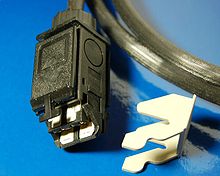A token ring network is a local area network in which all computers are connected in a ring or star topology and a binary digit or token-passing scheme is used in order to prevent the collision of data between two computers that want to send messages at the same time.
Token Ring is a computer networking technology used to build local area networks. It was introduced by IBM in 1984, and standardized in 1989 as IEEE 802.5.


It uses a special three-byte frame called a token that is passed around a logical ring of workstations or servers. This token passing is a channel access method providing fair access for all stations, and eliminating the collisions of contention-based access methods.
Token Ring was a successful technology, particularly in corporate environments, but was gradually eclipsed by the later versions of Ethernet.




